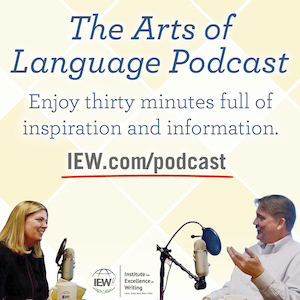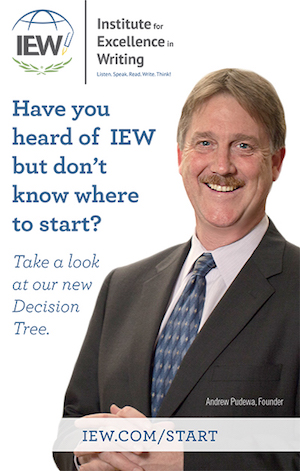Curriculum
Homeschooling provides the opportunity for parents to customize curriculum based up individual student needs (Ray, 2002). Students who desire to focus upon a specific content area can revolve their education plan around his or her unique gifts and/or talents. Adapting curriculum to meet the interests and needs of gifted learners is a common practice in gifted and talented education programs nationwide (Wessling, 2012). There are a variety of curriculum options available parents may chose from including complete prepackaged curriculum, purchasing by subject, and studying by subject. The type of curriculum that a parent chooses will be based upon their method of choice.
Homeschooling gifted and talented children offers parents the opportunity to advance students according to their needs. Acceleration through curriculum and grades is a method of customization that has been proven to keep students engaged and challenged (Hargrove, 2012). The advantage of homeschooling is the ability of parents to advance their children. In many public schools acceleration is not looked upon with favor because of many misconceptions (Hargrove, 2012). It is not uncommon for a gifted homeschool student to work one to three or more grades ahead of students their age (Kearney, 1984).
One common concern that parents have is a fear of students developing learning gaps (Rivero, 2012). Learning gaps are common in public school and homeschool. Gifted children often have asynchronous development which means they may be two or three grade levels above average in one subject, on grade level in some subjects, and possibly below average in other subjects. A benefit of homeschooling is the ability to customize curriculum to meet these learning needs. Over time the dots will connect. It is important for parents to remember that they will not be able to teach everyhing (Rivero, 2012).
Methodology
Homeschooling parents call the instructional practices they use methods. Homeschooling has many different looks. One homeschool family may be highly structured like a school; whereas, another homeschooling family may have very little structure. There is not one right way to homeschool (Ensign, 1997). The parents may change the way they homeschool over time or they may change the way they homeschool for a season to meet a need. The most common methods are traditional, classical, unit studies, unschooling, computer based learning, online classes, and the eclectic method.
- Traditional: Also called the school-at-home method. This method resembles school in a traditional classroom. Children stick to strict schedules and rely on textbooks of curriculum (Morse, 2001).
- Classical: This method is based upon the trivium philosophy derived from ancient Greece. Children progress through three stages of learning: grammar, logic, and rhetoric. (Morse, 2001).
- Unit studies: This method works well with multiple ages because instruction is based upon a theme rather than individual subjects (Morse, 2011). The theory behind unit studies is that all knowledge in interrelated and children will remember it better when it is taught in a unified format (Morse, 2001).
- Unschooling: The student directs the learning in this method and there is no strict structure (Morse, 2001). Children do not go without an education, they learn from the world around them and they decide what they would like to study (Morse, 2001).
- Computer based: Students learn by using a software based curriculum, often in a traditional format. Children are taught by the program and learn at their own pace.
- Online classes: This is similar to computer based learning, instead of software students use internet based programs or classes. Sometimes students take class through an umbrella school, an online school, or just use an independent learning program (Blair, 2010). Students might enroll in Liberty University’s Online Academy or they may use programs such as Reading Eggs or Always Ice Cream. These are online programs for children to learn in an interactive environment.
- Eclectic method: This method is a mix and match of different methods and curriculums. One child may unschool, while another does unit studies, and another uses a traditional format. An individual child may use online classes for advanced mathematics, unit studies for history and science, and a classical method for language arts and debate.
Where to find curriculum?
An extensive list of curriculum publishers and website is in development. The top curriculum providers are listed below. If you know of curriculum that works well with gifted children, please use the contact page to send us an email!
Christian Book Distributors: www.CBD.com
This is a Christian company. However, they offer an extensive curriculum section.
Critical Thinking Company: www.criticalthinking.com
Amazon: www.amazon.com
Amazon has a large selection of homeschooling materials.
ABeka Books: www.abeka.com
Sonlight: www.sonlight.com
Konos: www.konos.com
Five in a Row: www.fiveinarow.com
Prufrock Press: www.prufrock.com
Ambleside Online: www.amblesideonline.org
Gifted Homeschoolers Forum: http://giftedhomeschoolers.org/ghf-online/
Royal Fireworks Press: www.rfwp.com
Art of Problem Solving: www.artofproblemsolving.com
Garlic Press: www.garlicpress.com
Key Curriculum Press: http://www.keycurriculum.com
Think Well Homeschool: www.thinkwellhomeschool.com
Moving Beyond The Page: www.movingbeyondthepage.com
Free Spirit Publishing: www.freespirit.com
Great Potential Press: www.greatpotentialpress.com
Mind Vine Press: www.mindvinepress.com
Timberdoodle: www.timberdoodle.com
There is also the option to create your own curriculum. You can do so by exploring what strengths and weaknesses your child has, along with any interests. You can allow your children to learn through a partial unschooling and partial structured schooling, all unschooling, or all structured schooling. The options are endless. Education does not have to be mundane or boring all the time. It can be fun and engaging.



